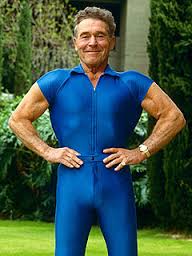You can rebuild them, even if you are middle-aged or older.
?Our lab and others have shown repeatedly? that older muscles will grow and strengthen, says Marcas Bamman, a professor of integrative biology at the University of Alabama at Birmingham. In his studies, men and women in their 60s and 70s who began supervised weight training developed muscles that were as large and strong as those of your average 40-year-old. Jack LaLanne continued to work out and maintain large and strong muscles until he passed away at the age of 96 years old.
The process of bulking up works differently in older people than in the young. Skeletal muscles are composed of various types of fibers and ?two things happen? to those fibers after we reach middle age, Dr. Bamman says. Some muscle fibers die, especially if we have not been exercising our muscles much. Sedentary adults can lose 30 to 40 percent of the total number of fibers in their muscles by the time they are 55, Dr. Bamman says.
Others of the fibers remain alive but shrink and atrophy as we age.
Young people who work out add new muscle fibers and also plump up their existing ones. Older people do not. We increase the size of our atrophied muscle fibers with exercise but, for a variety of physiological reasons, do not add to the number of fibers, Dr. Bamman says.
But in practical terms, who cares? Older muscles will become larger and stronger if you work them, Dr. Bamman says.
The key, he continues, is regular and progressive weight training. If you don?t belong to a gym, consider joining one, and then plan on tiring yourself. In order to initiate the biochemical processes that lead to larger, stronger fibers, Dr. Bamman says, you should push your muscles until they are exhausted.
In his studies, volunteers used weights calibrated so that the lifters could barely complete a set of eight to 12 repetitions before their arms or legs grew leaden and they had to rest. They repeated each set two or three times and visited the gym three times per week. If you are new to weight workouts, ask for an orientation at your gym or consult an athletic trainer who often works with older clients.
Reference: Bickel CS1, Cross JM, Bamman MM. Exercise dosing to retain resistance training adaptations in young and older adults. Med Sci Sports Exerc. 2011 Jul;43(7):1177-87.






